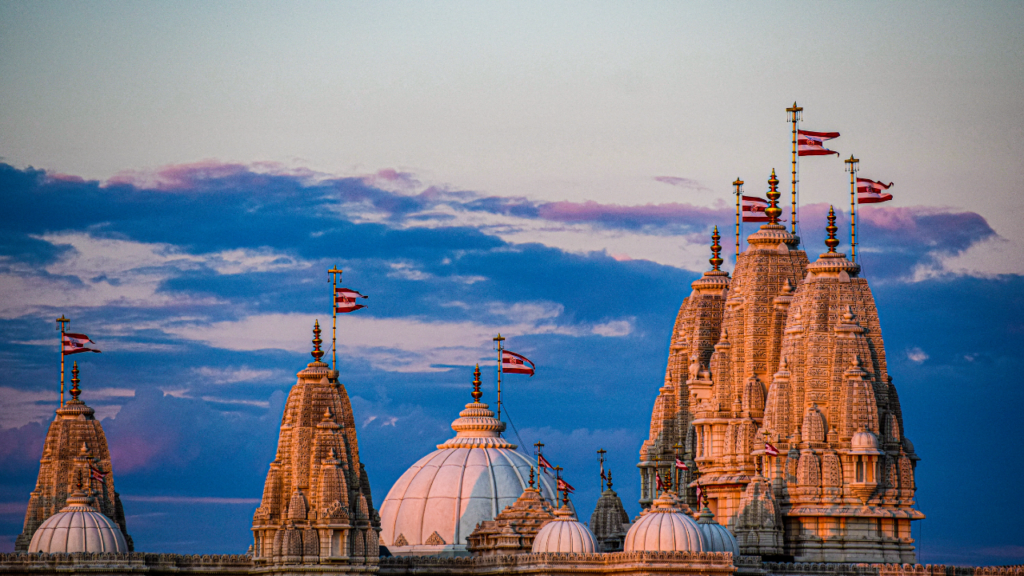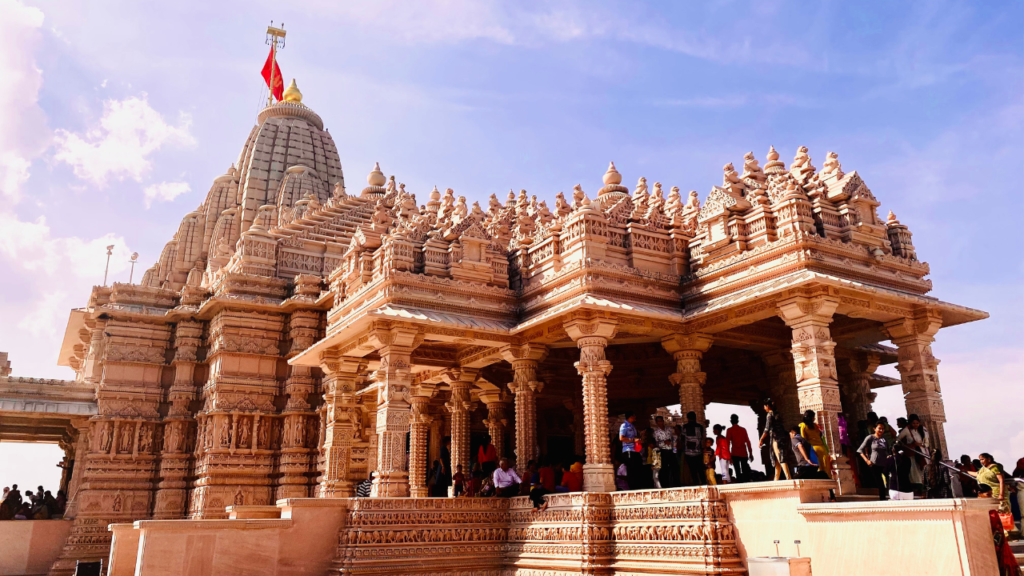
Hindu Temple

Introduction:
Hinduism, one of the world’s oldest religions, is rich in diversity and encompasses a plethora of traditions, rituals, and practices. At the heart of Hindu religious life are temples—sacred spaces that serve as a bridge between the divine and the mortal. These temples are not just architectural marvels but repositories of culture, history, and spiritual wisdom.
Architectural Splendor:
Hindu temples are known for their intricate architecture and intricate design, often reflecting the cultural and artistic nuances of the region in which they are located. Each temple is a unique masterpiece, showcasing a blend of sculpture, paintings, and symbolic elements. From the towering gopurams (entrance towers) adorned with intricate carvings to the sanctum sanctorum housing the main deity, every aspect of a Hindu temple is designed with a spiritual purpose.
Sacred Geometry and Symbolism:
The construction of Hindu temples is guided by principles of sacred geometry, known as Vastu Shastra, which aims to create an environment that resonates with spiritual energy. The layout of the temple, the placement of deities, and the orientation of various components are all carefully planned to align with cosmic forces. Symbolism plays a crucial role in Hindu temple architecture, with every sculpture, carving, and motif carrying profound meaning related to mythology, cosmology, and spiritual concepts.
Spiritual Significance:
Hindu temples are dedicated to various deities, each representing different aspects of the divine. The primary purpose of a temple is to provide a sacred space for devotees to connect with the divine, seek blessings, and engage in religious practices. The sanctum sanctorum, where the main deity resides, is the focal point of worship. Devotees offer prayers, perform rituals, and participate in religious ceremonies to express their devotion and seek spiritual guidance.
Rituals and Festivals:
Hindu temples are vibrant centers of religious activities, hosting a variety of rituals and festivals throughout the year. Daily puja (worship), aarti (rituals involving light), and elaborate ceremonies mark the routine life of a temple. Festivals such as Diwali, Navaratri, and Maha Shivaratri witness grand celebrations with processions, music, dance, and feasts, bringing communities together in a shared expression of devotion and joy.
Also Check
Community Hub:
Hindu temples serve as more than just religious centers; they are integral to the social fabric of communities. Temples often host educational and cultural events, fostering a sense of community and providing a space for learning about Hindu philosophy, mythology, and traditions. Many temples also engage in philanthropic activities, contributing to social welfare and humanitarian causes.
Pilgrimage Centers:
Some Hindu temples are renowned pilgrimage centers, attracting millions of devotees from around the world. Pilgrimages are not only a means of seeking spiritual upliftment but also serve as a cultural and communal experience. Temples like the Kashi Vishwanath Temple in Varanasi, the Tirupati Balaji Temple in Andhra Pradesh, and the Jagannath Temple in Puri hold special significance for pilgrims.
Conclusion:
Hindu temples stand as living testaments to the enduring spirituality and cultural richness of Hinduism. Beyond their architectural grandeur, these sacred spaces play a crucial role in fostering community, preserving tradition, and facilitating the spiritual journey of millions. Each temple, with its unique blend of art, symbolism, and devotion, contributes to the tapestry of Hindu religious and cultural heritage, inviting people to explore the depths of spirituality and connect with the divine.

(FAQs) About Hindu Temples:
What is a Hindu temple?
A Hindu temple is a sacred place of worship dedicated to one or more deities in Hinduism, serving as a focal point for religious practices and community activities.
What is the significance of Hindu temples?
Hindu temples hold cultural, spiritual, and social significance. They provide a space for worship, rituals, festivals, and community gatherings, fostering a sense of unity and devotion.
How are Hindu temples designed?
Hindu temples exhibit diverse architectural styles influenced by regional traditions, featuring intricate carvings, sculptures, and symbolic elements that convey spiritual meanings.
Why are there different deities in Hindu temples?
Hindu temples may be dedicated to various deities, each representing different aspects of the divine. Devotees choose temples based on personal preferences and the specific blessings they seek.
What rituals take place in Hindu temples?
Hindu temples host daily pujas (worship), aartis (rituals involving light), and special ceremonies during festivals. These rituals aim to honor the deities and engage devotees in spiritual practices.
Can non-Hindus visit Hindu temples?
Many Hindu temples welcome visitors, regardless of their religious background, as long as they respect the customs and guidelines of the temple.
Are there any specific rules for entering Hindu temples?
Temples often have guidelines regarding dress code, footwear removal, and behavior to maintain the sanctity of the sacred space. Visitors are expected to follow these rules.
What is the significance of the sanctum sanctorum in Hindu temples?
The sanctum sanctorum houses the main deity and is the holiest part of the temple. Devotees offer prayers and perform rituals in front of the deity to seek blessings.
Do Hindu temples have community activities?
Yes, Hindu temples often serve as community hubs, hosting cultural events, educational programs, and philanthropic activities to foster social welfare and unity.
Are there famous pilgrimage Hindu temples?
Yes, many Hindu temples are renowned pilgrimage centers, attracting devotees from around the world. Examples include the Kashi Vishwanath Temple, Tirupati Balaji Temple, and Vaishno Devi Temple.






